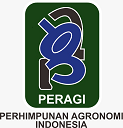Kajian Kualitas Minyak Serai Wangi (Cymbopogon winterianus Jowitt.) pada CV AB dan PT. XYZ Jawa Barat
Abstract
Minyak atsiri dapat dijumpai di berbagai jenis tanaman yang tersebar di seluruh dunia. Indonesia setidaknya memiliki 40 jenis tanaman penghasil minyak atsiri komersial. Minyak atsiri memiliki berbagai manfaat, yaitu sebagai bahan baku kosmetik, obat-obatan, parfum, lilin, dan flavor. Salah satu atsiri yang diproduksi di Indonesia adalah citronella oil, citronella oil termasuk salah satu jenis atsiri yang populer digunakan sebagai anti-nyamuk, anti-jamur, dan anti-oksidan. Meskipun di Indonesia sudah berkembang luas petani yang berkebun serai wangi dan mengolahnya hingga menghasilkan minyak, akan tetapi masih banyak di antara mereka yang memproduksi citronella oil yang belum memenuhi standar. Oleh sebab itu, perlu adanya kajian mengenai faktor-faktor yang mempengaruhi kualitas citronella oil yang dihasilkan oleh usaha perseorangan agar dapat memenuhi standar industri. Untuk mengetahui kandungan citronella oil, dilakukan pengujian GC-MS. Hasil penelitian menunjukkan bahwa citronella oil yang dihasilkan memiliki kadar sitronellal yang lebih rendah dibandingkan industri besar, yaitu 11.37%. Sedangkan standar minimal untuk sitronelal adalah 35%, hal ini diduga berkaitan dengan umur panen, kualitas tempat tumbuh, kualitas mesin, dan pretreatment.
Keywords
Full Text:
PDFReferences
Alina, M., Sahoo, D., Binoy, T., & Rajashekar, Y. (2021). Antifungal activity and volatile organic compounds analysis of essential oils from Cymbopogon species using solid-phase microextraction-gas chromatography-mass spectrometry. Journal of Agriculture and Food Research, 3 (December 2020), 100110. https://doi.org/10.1016/j.jafr.2021.100110
Azeem, M., Zaman, T., Tahir, M., Haris, A., Iqbal, Z., Binyameen, M., Nazir, A., Shad, S. A., Majeed, S., & Mozūraitis, R. (2019). Chemical composition and repellent activity of native plants essential oils against dengue mosquito, Aedes aegypti. Industrial Crops and Products, 140(July), 111609. https://doi.org/10.1016/j.indcrop.2019.111609
Badan Standarisasi Nasional. SNI 06-3953. (1995). Minyak Sereh.
Eden, W. T., Alighiri, D., Cahyono, E., Supardi, K. I., & Wijayati, N. (2018). Fractionation of Java Citronella Oil and Citronellal Purification by Batch Vacuum Fractional Distillation. IOP Conference Series: Materials Science and Engineering, 349(1). https://doi.org/10.1088/1757-899X/349/1/012067
Francisco, V., Figueirinha, A., Neves, B. M., García-Rodríguez, C., Lopes, M. C., Cruz, M. T., & Batista, M. T. (2011). Cymbopogon citratus as source of new and safe anti-inflammatory drugs: Bio-guided assay using lipopolysaccharide-stimulated macrophages. Journal of Ethnopharmacology, 133(2), 818–827. https://doi.org/10.1016/j.jep.2010.11.018
Gavahian, M., Lee, Y. T., & Chu, Y. H. (2018). Ohmic-assisted hydrodistillation of citronella oil from Taiwanese citronella grass: Impacts on the essential oil and extraction medium. Innovative Food Science and Emerging Technologies, 48(March), 33–41. https://doi.org/10.1016/j.ifset.2018.05.015
George, D. R., Sparagano, O. A. E., Port, G., Okello, E., Shiel, R. S., & Guy, J. H. (2010). Environmental interactions with the toxicity of plant essential oils to the poultry red mite Dermanyssus gallinae. Medical and Veterinary Entomology, 24(1), 1–8. https://doi.org/10.1111/j.1365-2915.2009.00855.x
Jaswadi, Iqbal, M., Sumiadji. (2015). SME Governance in Indonesia – A Survey and Insight from Private Companies. Procedia Economics and Finance, 31(15), 387–398. https://doi.org/10.1016/S2212-5671(15)01214-9
Kakaraparthi, P. S., Srinivas, K. V. N. S., Kumar, J. K., Kumar, A. N., Rajput, D. K., & Sarma, V. U. M. (2014). Variation in the essential oil content and composition of Citronella (Cymbopogon winterianus Jowitt.) in relation to time of harvest and weather conditions. Industrial Crops and Products, 61, 240–248. https://doi.org/10.1016/j.indcrop.2014.06.044
Luthria, D. (2014). Influence of Sample Preparation on the Assay of Isoflavones Influence of Sample Preparation on the Assay of Isoflavones. April 2009. https://doi.org/10.1055/s-0029-1185439
Moncada, J., Tamayo, J. A., & Cardona, C. A. (2014). Techno-economic and environmental assessment of essential oil extraction from Citronella (Cymbopogon winteriana) and Lemongrass (Cymbopogon citrus): A Colombian case to evaluate different extraction technologies. Industrial Crops and Products, 54, 175–184. https://doi.org/10.1016/j.indcrop.2014.01.035
Mu, K. (2012). Development of Mathematical Model for the Prediction of Essential Oil Extraction from Eucalyptus Citriodora Leave. 2(3), 2298–2306.
Rabiei, Z. (2017). Asian Paci fi c Journal of Tropical Biomedicine. Asian Pacific Journal of Tropical Biomedicine, 7(2), 166–172. https://doi.org/10.1016/j.apjtb.2016.11.028
Rehman, J. U., Ali, A., & Khan, I. A. (2014). Fitoterapia Plant based products : Use and development as repellents against mosquitoes : A review. Fitoterapia, 95, 65–74. https://doi.org/10.1016/j.fitote.2014.03.002
Sinha, S., Biswas, D., & Mukherjee, A. (2011). Antigenotoxic and antioxidant activities of palmarosa and citronella essential oils. Journal of Ethnopharmacology, 137(3), 1521–1527. https://doi.org/10.1016/j.jep.2011.08.046
Tisgratog, R., Sanguanpong, U., Grieco, J. P., Ngoen-kluan, R., & Chareonviriyaphap, T. (2016). Acta Tropica Plants traditionally used as mosquito repellents and the implication for their use in vector control. Acta Tropica, 157, 136–144. https://doi.org/10.1016/j.actatropica.2016.01.024
Weng, D. C. J., Latip, J., Hasbullah, S. A., & Sastrohamidjojo, H. (2015). Optimal Extraction And Evaluation On The Oil Content Of Citronella Oil Extracted From Cymbopogon Nardus. Malaysian Journal of Analytical Sci. 19(1), 71–76.
Refbacks
- There are currently no refbacks.



























